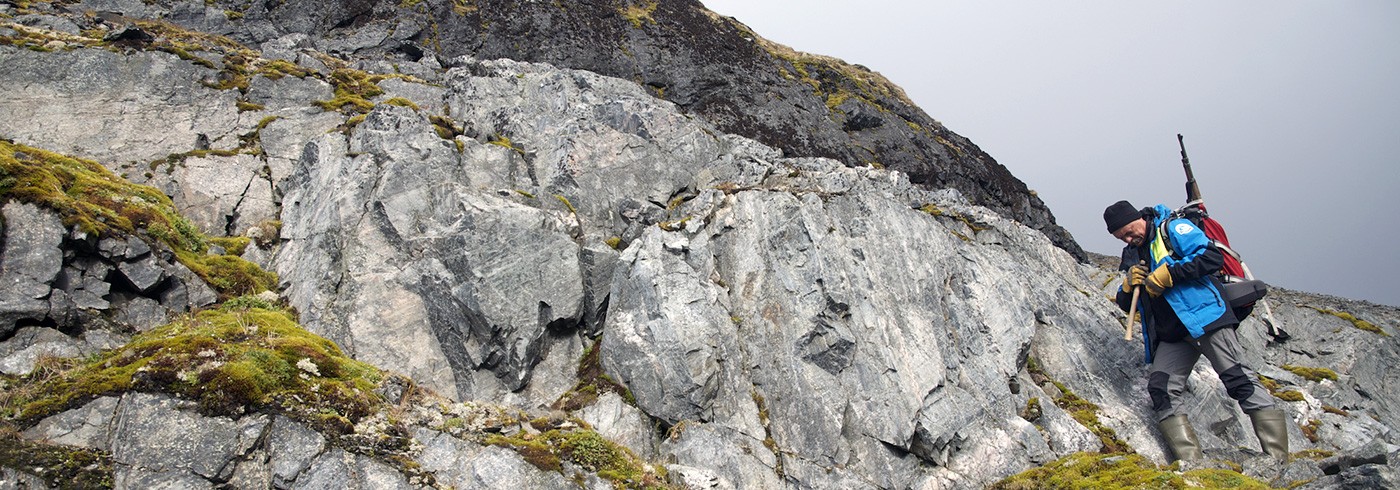The weather being still the same, sunshine and a hard wind, we walked eastwards through Trollstabbane and around the southern slopes of Kistefjellet. After some time we figured out the general structural style, isoclinal folding from millimetres to kilometres, with a vergence towards the west. We saw most of the ”unmapped” Proterozoic successions now and are more certain that these can be correlated with Isbjørnhamna Group rocks from Hornsund. Analysis of our samples will prove or disapprove this hypothesis.
About 1,5 km from the camp we saw a polar bear sleeping in a place sheltered from the wind by rocks. Good to keep the alertness up. Close to the point where we turned back to the camp we came across some not too old footprints, probably from our Russian colleagues who work mainly on the Mesozoic successions further to the east, at Keilhaufjellet. Maybe they are still there, but it’s to far to check by a walk.
Tomorrow we will again go northwards to get a better grip on structure and stratigraphy there, after what we have seen today. But we expect no surprises. Detailed mapping of this area would be beneficial and require about two to three weeks fieldwork. But this is not the intention of this project.
Presently, bad weather is arriving and it started to rain. The weather forecast – as usual yr.no looked up at home and transferred to us via Iridium – promises high wind speeds tomorrow and then a day of changing weather and wind directions. Probably, we will take then the opportunity to leave Sørkapp for Hornsund. The following 10 m/s easterly winds can last long and will prohibit a crossing of Hornsund by Zodiac. The remaining 10 days of the expeditions we would then spend in Hyttevika and do complementary sampling for our comparative studies with Nordenskiöld Land (NOA-Svalbard 2011), Prins Karls Forland and Sørkapp.
Henning Lorenz, Uppsala universitet








